Some sunburns can be more severe and may require medical attention. These are classified as second-degree burns, affecting the outer layer of the skin (epidermis) and the deeper layer (dermis).
Second-degree burns can result in blisters, swelling, infection, scarring, and permanent skin changes. They may also impact other organs and systems in the body, including the nervous system, immune system, and fluid balance.
For the treatment of a second-degree sunburn, begin by gently rinsing the affected area. Follow this by cleansing the burn and applying a moisturizing ointment. Finally, take care to bandage the burn carefully.
This article will provide a comprehensive guide on identifying, treating, and preventing second-degree burns caused by sun exposure.
Second-Degree Sunburn Treatment: At-Home Procedure

It is crucial to halt the burning process with a second-degree burn immediately. This entails removing oneself from the heat source or extinguishing any flames.
Next, cooling down the affected area with cold water or a cold compress is important. This will aid in reducing swelling, inflammation, and pain. You can run cold water over the burn for 15 to 20 minutes or apply a cold compress for 10 to 15 minutes.
Avoid ice or ice packs on a second-degree burn, as they can further damage the skin. Additionally, refrain from using butter, oil, toothpaste, or other home remedies on the burn, as they can trap heat in the skin and increase the risk of infection.
After cooling the burn, gently cleanse it with mild soap and water. This will help eliminate any dirt, debris, or bacteria. Avoid scrubbing or rubbing the burn, as this may aggravate the area and result in more blisters.
Importance of Keeping The Burn Moist With Ointment
After cleansing the burn, it is recommended to apply an antibiotic ointment or cream to prevent infection and facilitate healing. Over-the-counter options such as bacitracin, neomycin, polymyxin B, or silver sulfadiazine can be utilized.
Apply a thin layer of ointment or cream to cover the entire burned area once or twice daily. Avoid excessive application, as it may excessively moisten the wound and impede healing.
To ensure optimal recovery, keeping the burn moisturized using ointment or cream is recommended until complete healing occurs. This crucial step helps prevent scabbing, scarring, and itching, promoting a smooth and hassle-free healing process.
Properly Bandaging The Burn For Protection
To properly care for a burn, it's important to apply ointment or cream first and then cover it with a sterile gauze bandage or dressing. Protective measure safeguards against further injury, infection, or contamination.
Remember to change the bandage or dressing at least once a day or whenever it becomes wet, dirty, or bloody. Be vigilant for any signs of infection, such as pus, odor, or increased pain.
When selecting a bandage or dressing, consider the nature of your burn. Options include:
- Non-adherent gauze: This gauze allows air circulation and doesn't stick to the wound, making it suitable for superficial second-degree burns with minimal fluid leakage.
- Hydrogel: Gel-based and infused with cooling and moisturizing properties, hydrogel dressings benefit deeper second-degree burns with moderate fluid leakage.
- Hydrocolloid: With the ability to form a seal over the wound and absorb excess fluid, hydrocolloid dressings are ideal for deeper second-degree burns with high fluid leakage.
- Alginate: Made from seaweed, alginate dressings create a gel-like substance upon contact with the wound. They are effective in deep second-degree burns that leak fluid and bleeding.
Avoid cotton or wool bandages or dressings, as these can adhere to the wound and cause further harm when removed. Prioritize the comfort and healing of the burn by opting for appropriate materials.
Sunburn Treatment At The Second Degree: An Overview

A second-degree burn is a specific type that affects both the epidermis and the dermis. The epidermis, serving as the outermost layer of our skin, shields it from various external factors, including bacteria, chemicals, and harmful UV rays. Below the epidermis lies the dermis, which encompasses crucial elements such as blood vessels, nerves, hair follicles, sweat glands, and collagen fibers.
Characteristics of a second-degree burn may include:
- Redness and swelling in the affected area.
- Blisters that may rupture and release fluid.
- Pain and sensitivity to touch or temperature.
- The moist or glossy appearance of the skin.
- Presence of white or dark patches within the burned area.
How Do We Differentiate Second-degree Burns From Other Types Of Burns?
Burns are categorized into three degrees based on their severity and depth:
- First-degree burns: These are the mildest burns, affecting only the epidermis. They result in redness, warmth, and mild pain. Typically, they heal within a week without leaving scars.
- Second-degree burns: A moderate to severe, affecting both layers of the skin. They cause blisters, swelling, pain, and potential infection. Healing may take several weeks and result in scarring or lasting changes to the skin.
- Third-degree burns: These are the most severe burns, damaging all layers of the skin and sometimes the underlying tissues like muscles, bones, or nerves. They lead to charred or blackened skin, numbness, and loss of sensation. Immediate medical attention is necessary, often requiring skin grafting or surgical intervention for healing.

Common Causes and Locations of Second-Degree Burns
Second-degree burns can happen when excessive heat or UV radiation affects certain body areas. Here are some commonly affected areas:
- The Face: A sensitive part of the body prone to burns from sun exposure and hot objects. Second-degree burns on the face can impact the eyes, nose, mouth, ears, or cheeks.
- The Hands: Being frequently exposed to hot objects or substances like stoves, ovens, irons, or chemicals, hands are susceptible to second-degree burns that can impair function and sensation.
- The Feet: Feet often come into contact with hot surfaces or materials like sand, asphalt, or metal. Second-degree burns on the feet can affect walking and balance.
- The Chest: The large chest can be burned by sun exposure or contact with hot liquids or vapors. Second-degree burns on the chest can impact breathing and circulation.
- The Back: Similar to the chest, the back can get burned by sun exposure, hot objects, or flames. Second-degree burns on the back can affect posture and movement.
The most common cause of second-degree burns is sunburn. Sunburn occurs when the skin is exposed to excessive UV radiation without sufficient protection. This radiation can damage skin cell's DNA, causing inflammation and cell death.
Second-degree burns may result from other various causes, such as:
- Hot liquids or vapors: Can scorch the skin, leading to painful blisters.
- Hot objects or flames: They have the potential to ignite clothing or hair, resulting in direct skin contact.
- Electricity: Electric shocks or sparks can lead to skin burns.
- Chemicals: They can rust or irritate the skin, causing painful blisters.
Recognizing Symptoms of Second-Degree Burns

One obvious indicator of a second-degree burn is the formation of blisters. These blisters are small fluid-filled pockets that develop beneath the damaged skin layer. Their size, shape, and color may vary depending on the severity and location of the burn.
Blisters can manifest as clear, yellow, or bloody and can be circles, ovals, or irregular shapes. They can appear in isolation or clusters and may affect superficial or deep layers of the skin.
Beyond providing a natural barrier and cushion for the injured skin, blisters contain white blood cells and antibodies that aid in the fight against infection. If they rupture and leak fluid, there is an increased risk of infection and dehydration.
Other visual indicators can identify second-degree burns:
- Redness and swelling: Increased blood flow and inflammation cause the affected skin to turn red and become swollen.
- Wetness or shininess: If blisters or damaged blood vessels are present, the skin's surface may appear wet or shiny due to fluid leakage.
- White or dark patches: Tissue damage or scarring may cause skin color changes, resulting in either white or dark patches.
These signs can help in recognizing second-degree burns.
Pain And Discomfort Associated With Second-degree Burns
Second-degree burns are typically associated with significant pain and discomfort. This occurs because the heat, inflammation, or infection irritates and exposes the nerve endings in the dermis.
The pain and discomfort can vary depending on the burn's size, depth, and location. Several factors can influence the level of pain and discomfort experienced:
- Temperature of the heat source: Higher temperatures result in more severe burns and increased pain.
- Duration of exposure: Longer exposure leads to more extensive burns and heightened pain.
- Type of heat source: Different heat sources cause various damage and pain. For instance, sunburn may cause a burning sensation, while chemical burns may cause a stinging sensation.
- Individual's pain threshold: Pain tolerance varies among individuals, with some having higher or lower thresholds.
- Individual's emotional state: Pain levels may differ based on mood, stress, or coping skills.
Methods to assess the pain and discomfort of a second-degree burn include:
- Pain scale: This numerical or verbal tool helps gauge pain intensity, commonly ranging from 0 (no pain) to 10 (worst possible pain).
- Visual analog scale: This tool assesses pain severity using a horizontal line with endpoints representing no pain and unbearable pain. The person can mark their pain level on the line.
- Faces scale: This scale evaluates pain degree using facial expressions, allowing the person to choose the face that matches their pain level, ranging from no to extreme pain.
By employing these evaluation methods, healthcare professionals can better understand and alleviate patient discomfort resulting from second-degree burns.
Stages of Healing for Second-Degree Burns

The healing process of a second-degree burn varies in duration, depending on its size, depth, and location. This process can be categorized into three stages: initial reaction, subsequent repair, and eventual remodeling. The timeframe for complete healing may span over several weeks.
React: Initial Response of The Body To The Burn
Immediately after the burn, the body enters the reactive stage, typically lasting for a few hours to a few days. During this crucial phase, the body initiates several vital processes: stanching bleeding, combating infection, and reducing inflammation.
Within this stage, various reactions occur, each playing a crucial role in the healing process:
- Vasoconstriction: The blood vessels in the affected area narrow, effectively diminishing blood loss and minimizing heat dissipation.
- Vasodilation: Concurrently, the adjacent blood vessels dilate, promoting increased blood flow and oxygen delivery.
- Clotting: To seal the wound and prevent further bleeding, blood cells, and proteins work in tandem to form protective clots.
- Inflammation: As part of the immune response, white blood cells and other specialized immune cells migrate to the wound site, battling potential infections and removing necrotic tissue.
- Pain: The nerve endings in the affected area promptly transmit signals to the brain, alerting it of the injury and triggering a protective response.
Understanding these intricate mechanisms sheds light on the body's remarkable ability to heal itself and emphasizes the importance of appropriate care during the reactive stage.

Repair: Regrowth of Damaged Skin Tissue
After the react stage, the repair phase follows suit, spanning from a few days to a few weeks. In this crucial stage, the body undergoes a remarkable process of regenerating fresh skin tissue to supplant the damaged one.
Several noteworthy processes take place during this stage:
- Granulation: Fibroblasts (the cells that fabricate collagen) and endothelial cells (cells that line blood vessels) multiply and give rise to granulation tissue, characterized by its pink or red hue, which diligently fills the void left by the wound.
- Epithelialization: Keratinocytes (cells that produce keratin) nimbly migrate from the wound's periphery and hair follicles or sweat glands, harmoniously forming a novel epidermis atop the granulation tissue.
- Angiogenesis: A spectacle of burgeoning blood vessels sprouting from their predecessors, effectively ferrying a generous supply of oxygen and nutrients to nurture the burgeoning skin tissue.
- Contraction: A mesmerizing feat, the wound's edges pull together, deftly reducing its size and refining its shape.
Throughout this intricate sequence, the body orchestrates a symphony of renewal, enabling the wounded area to rejuvenate and embrace restoration gradually.
Remodel: Reshaping And Strengthening The New Skin

After the repair stage, the remodeling phase begins, continuing for months to years. Its purpose is to enhance the quality and appearance of the newly formed skin tissue. Notable changes taking place during this stage encompass several aspects:
- Collagen remodeling: The collagen fibers in the dermis reorganize into a more structured and robust framework.
- Scar maturation: Scar tissue gradually smoothens, softens, flattens, and lightens in color.
- Pigmentation restoration: Melanocytes, the cells responsible for producing melanin, restore the natural skin color.
- Sensation recovery: Nerve endings in the skin regain function and sensitivity.
This stage aims to refine the skin's texture and enhance sensory perception.
Preventing Second-Degree Burns
Simple precautions can help prevent second-degree burns when exposed to heat or UV radiation. Here are some measures to consider:
- Safeguard against burns from hot surfaces and open flames.
- Keep hot objects or substances away from children, pets, or flammable materials.
- Use oven mitts, pot holders, or gloves when handling hot cookware, utensils, or food.
- Remember to turn off or unplug appliances when not in use or leaving the room.
- Be prepared for fire emergencies with fire extinguishers, smoke detectors, and escape plans.
- Avoid smoking or using candles near curtains, bedding, or furniture.
- Avoid wearing loose clothing or jewelry when working with fire or heat sources.
Safety Measures for Working with Hot Objects or Chemicals:
- Protect yourself with appropriate gear, including long sleeves, pants, shoes, gloves, goggles, or masks, while dealing with hot objects or chemicals.
- Strictly adhere to safety instructions and labels when handling or storing chemicals.
- Avoid direct contact or inhalation of harmful chemicals.
- After handling chemicals, thoroughly wash your hands and skin.
- If chemicals splash or spill onto your skin or eyes, promptly seek medical attention.
Strategies for Childproofing to Prevent Burns at Home:
- Ensure matches, lighters, candles, and other fire sources are inaccessible to children.
- Safeguard electrical outlets, cords, and sockets with safety caps or tape.
- Set the water heater temperature to a maximum of 120°F (49°C) to prevent scalding.
- Before bathing children or pets, check the water temperature diligently.
- Keep children away from stoves, ovens, microwaves, irons, and heaters.
- Educate children about fire and burn safety measures and provide guidance on responding during an incident.
The Significance of Sunscreen in Preventing Sunburn:
To shield your skin from harmful rays, follow these important guidelines:
- Before venturing outside, generously apply sunscreen with a minimum of SPF 15 (sun protection factor) to all exposed areas, allowing at least 15 minutes for absorption.
- Remember to reapply sunscreen every two hours or more frequently if sweating or swimming.
- Opt for a broad-spectrum sunscreen that safeguards against both UVA and UVB rays.
- Avoid excessive sun exposure from 10 a.m. to 4 p.m. when it's most intense.
- When basking in the sun, don protective clothing such as hats, sunglasses, or long sleeves to shield your skin.
- Whenever possible, seek shade or take shelter to mitigate sun exposure.
Dealing with Infected Second-Degree Burns

Infection poses a significant risk for individuals with second-degree burns, damaging healing, scarring, and overall health. Complications may arise, including fever, chills, or even sepsis, emphasizing utmost caution in managing such burns.
Signs of infection in second-degree burns may include:
- Heightened redness, swelling, or warmth surrounding the burn area.
- Presence of pus or unpleasant-smelling discharge emanating from the burn.
- Expansion or multiplication of blisters.
- Persistent or worsening pain duration.
- Development of symptoms such as fever, headache, nausea, or vomiting.
When To Seek Medical Attention For An Infected Burn?
If you suspect your second-degree burn is infected, it is crucial to seek immediate medical attention. Your doctor will carefully examine the burn and prescribe appropriate or other treatments to combat the infection.
It is also important to consult a medical professional for a second-degree burn if:
- The burn covers a significant area, exceeding 10% of your body surface area.
- The burn affects sensitive body parts, including the face, hands, feet, genitals, and joints.
- The burn results from exposure to electricity, chemicals, or radiation.
- The burn fails to heal within three weeks.
- The burn causes intense pain, itching, or scarring.
Remember, prioritizing prompt medical care ensures the best possible outcome for your burn injury.
Treating Second-Degree Burns in Children

Children are more susceptible to second-degree burns than adults due to their thinner and more delicate skin. Additionally, they face a heightened risk of complications like dehydration, infection, shock, or scarring.
If your child sustains a second-degree burn, it is imperative to seek immediate medical attention. A doctor will thoroughly evaluate the burn, assessing its size, depth, and severity while monitoring for signs of infection, dehydration, or other potential issues.
Treatment of children with second-degree burns may encompass multiple approaches, including:
- Carefully clean and dress the burn in sterile gauze or dressings.
- Applying antibiotic ointment or cream to ward off infection.
- Administering pain medication or anti-inflammatory drugs to alleviate discomfort and reduce swelling.
- Providing fluids or electrolytes to prevent dehydration.
- Administering a tetanus shot or booster to safeguard against tetanus.
- Offering antihistamines or corticosteroids to mitigate itching or inflammation.
- Conducting skin grafting or surgical procedures to address extensive or deep burns.

Possible Complications of Second-degree Burns In Children
Second-degree burns in children can lead to several complications, including:
- Infection: The most common complication, it can cause fever, pus, odor, or increased pain in the burn. In severe cases, it can even spread and lead to life-threatening sepsis.
- Dehydration: Another common complication manifests as thirst, dry mouth, sunken eyes, or reduced urine output. It can also impact blood pressure, heart rate, and kidney function.
- Shock:This serious complication arises when the body loses excessive fluid or blood due to the burn. Symptoms include pale skin, cold sweat, rapid breathing, weak pulse, or loss of consciousness.
- Scarring: Long-term scarring can occur when the new skin tissue becomes thicker, tighter, or darker than the surrounding skin. It can affect both the appearance and function of the skin.
- Contractures: Refers to the long-term consequence of scar tissue contracting and pulling the skin together. It can restrict movement and flexibility in the joints and muscles.
- Emotional trauma: A psychological complication, it exposes children to fear, anxiety, depression, or low self-esteem due to the burn. This can affect their behavior, mood, and social skills.
Preventive Measures For Second-degree Burns In Children

To prevent second-degree burns in children, minimizing their exposure to heat or UV radiation sources that can cause burns is crucial. Here are some preventive measures to consider:
- Educate children about fire safety and what to do in case of a burn.
- Protect children from hot objects like stoves, ovens, microwaves, irons, or heaters.
- Cover cords, sockets, and outlets with safety caps or tape.
- Ensure the water heater is set at 120°F (49°C) maximum to avoid scalding.
- Test water temperature before bathing children or pets.
- Apply sunscreen with a minimum SPF of 15 to all exposed areas of the skin at least 15 minutes before going outside.
- Apply sunscreen several times a day, especially if you sweat or swim.
- Choose a broad-spectrum sunscreen that shields you from UVA and UVB rays.
- Stay out of the sun between 10 a.m. and 4 p.m., when it is strongest.
- Wear sunglasses, hats, and long sleeves in the sun.
- Seek shade or shelter whenever possible.
Supporting A Child Living With A Second-degree Burn
Caring for a child with a second-degree burn can be challenging. They may endure physical pain, emotional distress, and social stigma. As a parent or caregiver, there are several ways to support your child:
- Provide comfort and reassurance, letting them know you're there.
- Encourage open expression of their feelings and concerns, listening with empathy and respect.
- Help them manage pain and discomfort with medication, distraction, relaxation, or positive reinforcement.
- Follow the doctor's instructions to prevent infection and complications.
- Maintain their normal routine and activities, allowing them to have fun and play with friends.
- Boost their self-esteem and confidence by acknowledging their strengths and achievements, reminding them they're more than their burn.
- Seek professional help from counselors, therapists, or support groups if signs of depression, anxiety, or trauma arise.
Conclusion
Second-degree burns damage the skin's outer and deeper layers, causing blisters, swelling, and pain. They can impact nerves, immune systems, and fluid balance. Some second-degree burns can be treated at home, but medical attention may be necessary, especially for children.
To prevent second-degree burns, avoid heat or UV radiation sources and take precautions when handling hot or chemical objects. Educate yourself and your family about fire safety.
This article provides information on recognizing, preventing, and treating second-degree burns. Consult your doctor or healthcare provider for any questions or concerns.

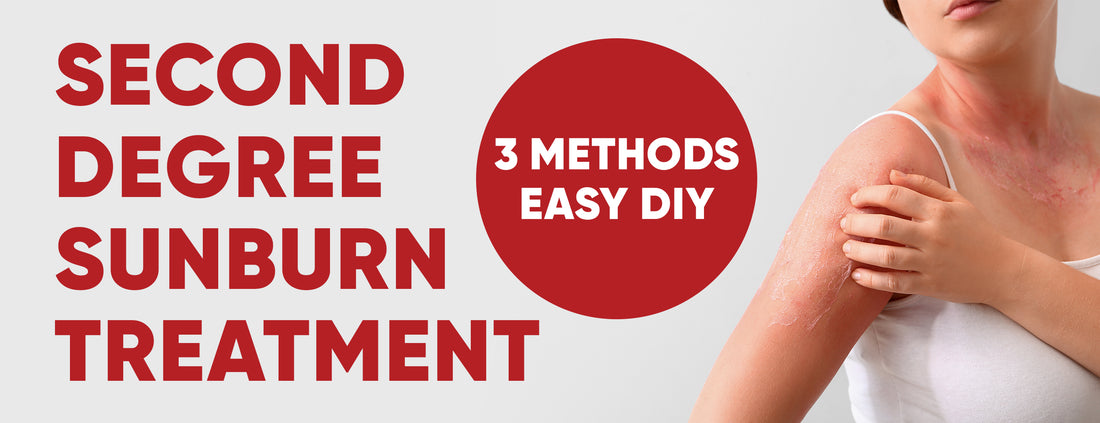




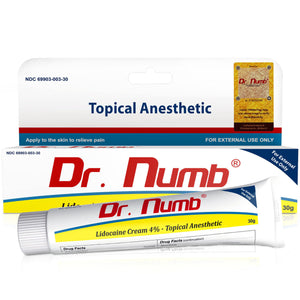
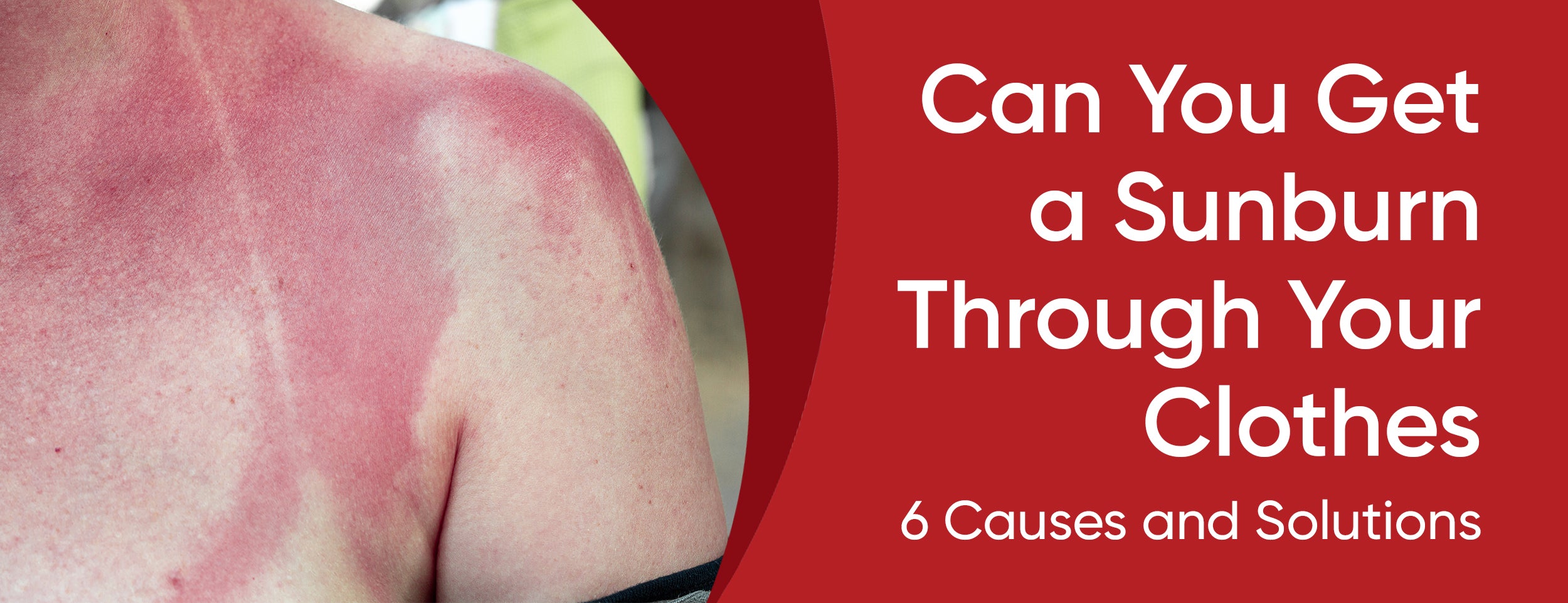
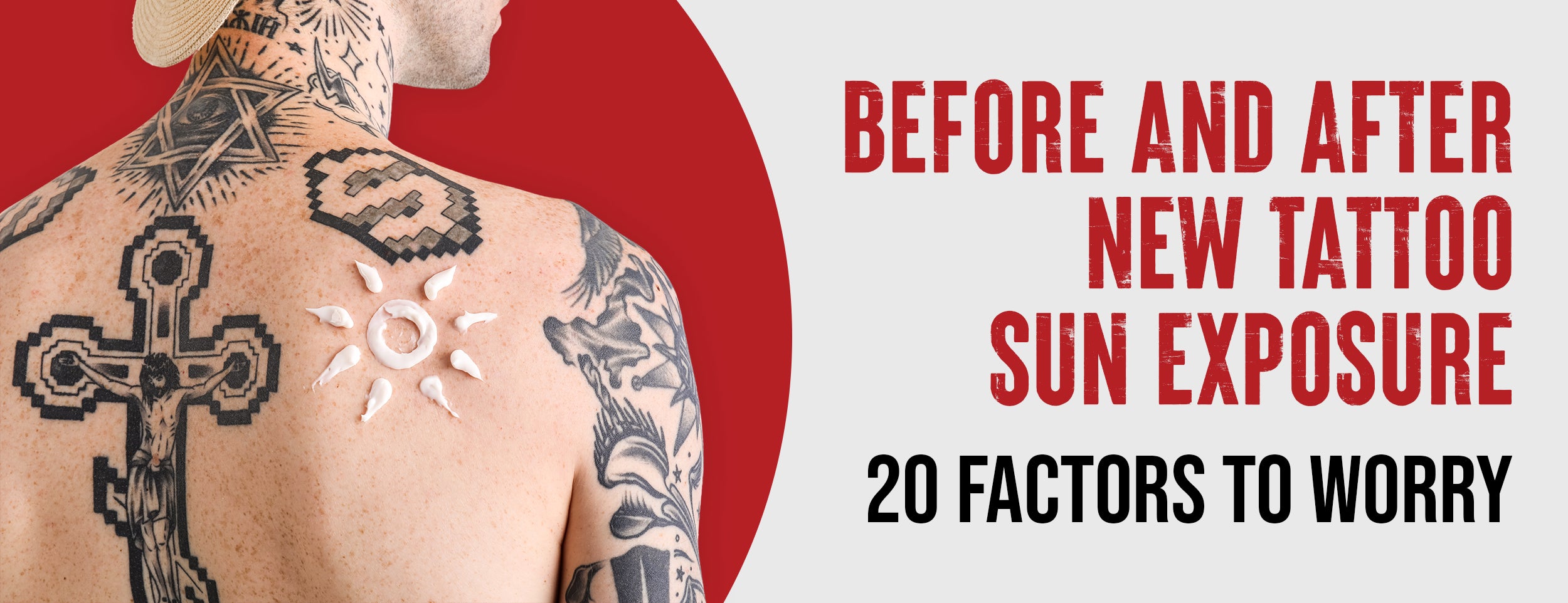
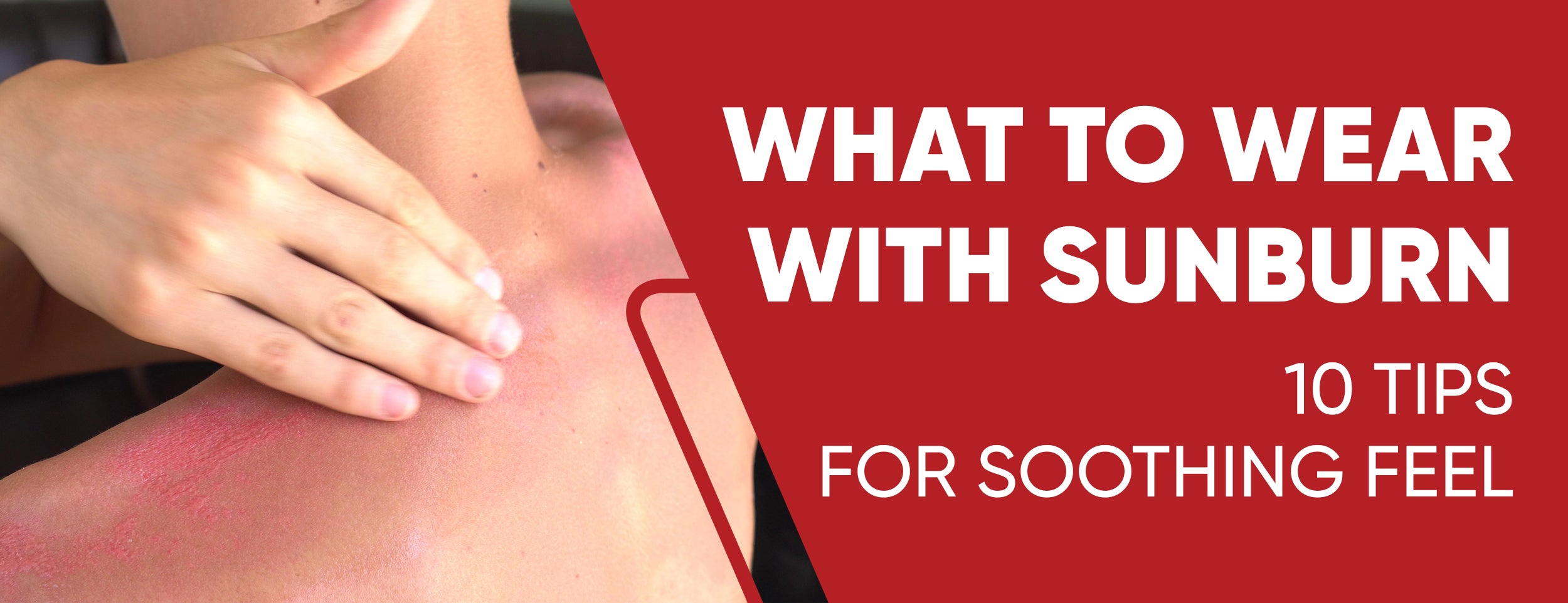
![How to Cover Sunburn With Makeup: 15 Ideas [Easy Solutions]](http://drnumb.com/cdn/shop/articles/How_to_Cover_Sunburn_With_Makeup__15_Ideas_Easy_Solutions.jpg?v=1705581434)

